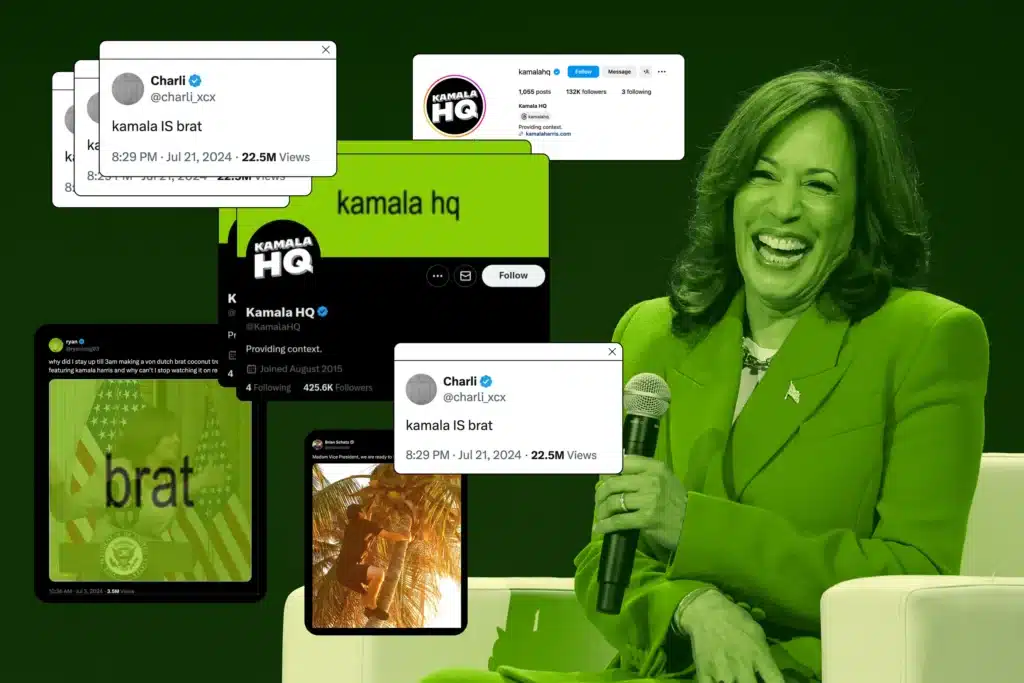Kamala Harris’ 2024 presidential campaign has taken an innovative approach by enlisting an extensive network of influencers and content creators to reach young voters and energize the general population. Moving beyond traditional media strategies focused on TV spots and press interviews, Harris’ team is harnessing the power of social media through influencers who provide behind-the-scenes access and personalized perspectives. At the recent Democratic National Convention (DNC), over 200 influencers were given VIP access to create and share content that resonates with their diverse audiences, from Gen Z to broader online communities. This move reflects the campaign’s understanding that younger voters increasingly rely on platforms like TikTok and Instagram for news and political engagement.
The influencers invited to the DNC produced content ranging from spontaneous interactions with political figures to reflections on shared cultural heritage. For instance, TikTok influencer Vidya Gopalan’s interview with Harris on their shared Indian background garnered nearly 2 million views. By focusing on organic, relatable content, Harris’ campaign is building a more personal connection with voters, blending humor, cultural relevance, and political messaging in ways that traditional media simply cannot match (POLITICO) (7News).
A key aspect of the campaign’s strategy is its embrace of popular social media trends, particularly those resonating with Gen Z. One standout example is how the campaign leaned into the “brat” aesthetic, a trend currently popular on platforms like TikTok and Instagram. The Harris campaign adopted visual elements and themes from Charli XCX’s Brat album, including adjusting their social media profile colors and overall style to align with this trendy vibe. By doing so, they tap directly into the cultural pulse of Gen Z, making the campaign more relatable and aligned with the digital spaces where younger voters are most active.

By embodying this “brat” trend, which celebrates a playful, rebellious attitude with a pop-culture twist, Harris is positioning herself as not just politically relevant but culturally attuned. This strategy demonstrates a keen understanding of how to connect with an audience that values authenticity, trendiness, and engagement with what’s cool right now. From meme-able moments to content featuring pop culture references, the campaign’s digital presence feels less like traditional politics and more like an influencer account—one that just happens to be talking about the future of the country.
This integration of trends is not merely an aesthetic choice; it’s a calculated way to make Harris relatable and build a connection with voters who are typically disillusioned with conventional political messaging. The campaign’s online presence has succeeded in making it “cool” to talk about Kamala Harris, giving influencers and everyday users alike the social currency to engage in this trend while supporting a political agenda. The challenge now lies in translating this digital enthusiasm into voter turnout, especially among younger voters, who could be critical in determining the outcome of a tight election (POLITICO) (7News) (Spectrum Local News).
As social media continues to grow as a powerful tool of influence, it has revolutionized how candidates engage with voters, allowing them to bypass traditional gatekeepers and connect directly with audiences. Platforms like TikTok, Instagram, and YouTube give unlikely users—whether emerging influencers, small-scale creators, or niche communities—a significant voice in the political discourse. This shift democratizes the conversation and gives campaigns like Harris’ an advantage in reaching audiences that would have been challenging to engage through conventional methods. The power to influence now lies not only with well-established media outlets but also with everyday people who can create viral moments, build communities, and sway opinions with a single post.
This dynamic has changed the landscape of political campaigns, giving candidates the ability to be more nimble and responsive, while empowering influencers and content creators with unprecedented access and relevance. As the 2024 election approaches, Harris’ campaign is a prime example of how digital strategy and social media trends are no longer just supplemental tools but central to modern political success.
BOSTON, MARS



